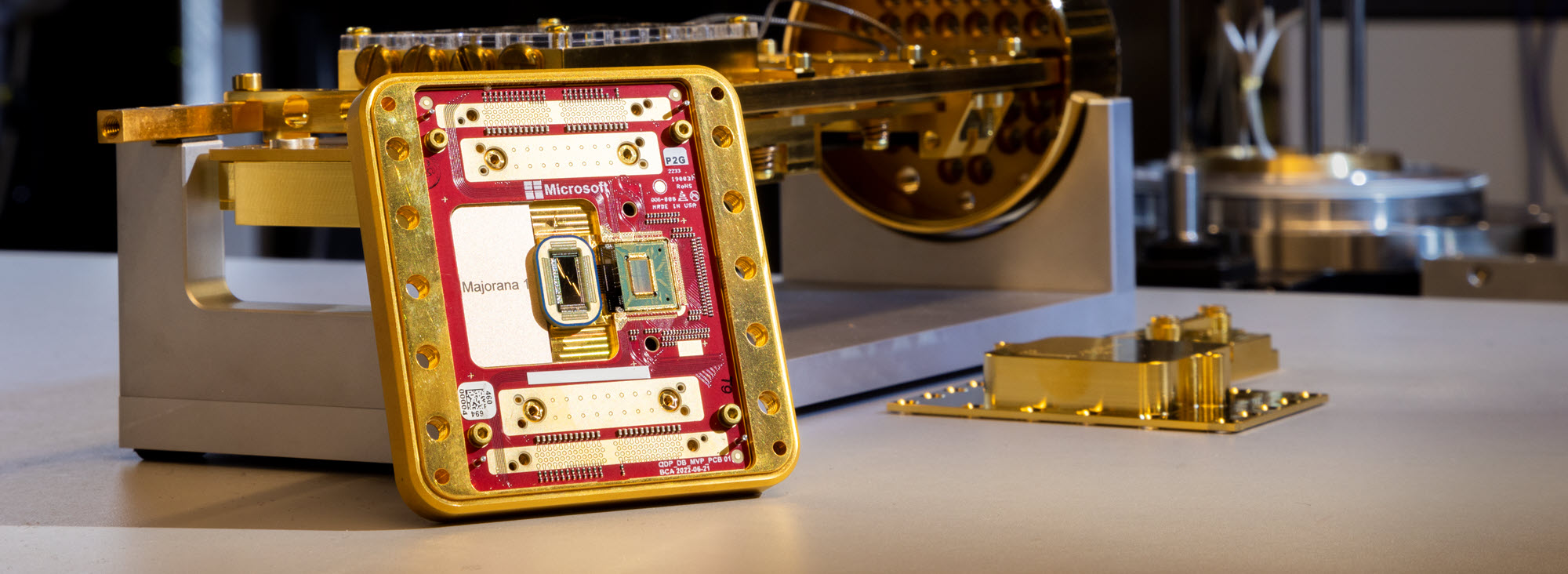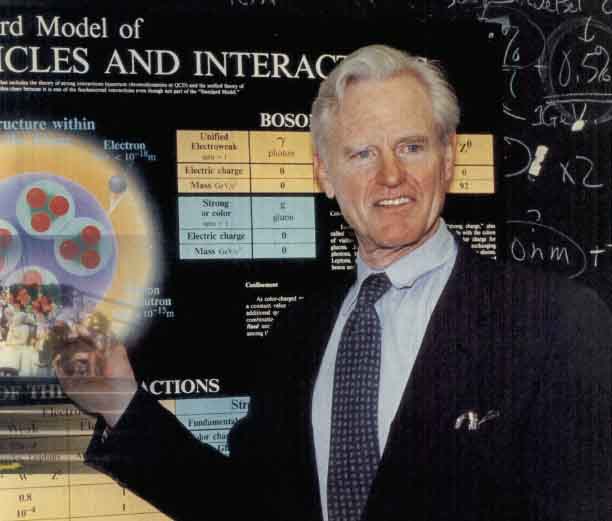MIT의 지질학자인 켈리 파크너와 존 에드먼드씨의 분석에 의하면 바닷물속의 금 함유량은 예상했던 양의 1천분의 1밖에 되지 않는다고 한다.
애석한 일이긴 하지만 그다지 비극적이지는 않다. 설명을 해보자. 지구의 강물은 육지를 가로지르며 모든 종류의 분해된 물질을 담은 채 바다에 도달한다. 땅위 딱딱한 물체의 대부분은 조금밖에 용해되지 않지만 그 조그마한 양이라도 바다로 흘러들어간 흔적을 찾아볼 수 있다. 바다 속의 물질은 물속에 영원히 남아있지 않는다. 바다의 얕은 부분이 마르면 염전이 남는데 여기에는 주성분인 소금외에도 분해된 모든 유형의 물질이 포함되어있다. 이렇게 가끔씩 메마르고 없어져가는 동안 해수(海水)속의 금을 포함한 모든 알려진 물질의 가루들이 발견되는 것이다.
지난 수천년에 걸쳐 인간은 금을 발견코자 세계전역을 누벼왔다. 그리고 1850년대는 캘리포니아, 1890년대는 클론다이크 등지에서 비록 단명 (短命)이긴 하지만 극적인 금광의 전성기를 맞이하였다. 그러나 바다 속의 금은 어찌되었던가? 세계에서 가장 큰 금광은 바다 속이 아닌가?
그것이 바로 사람들이 믿어왔던 바다. 그리고 그 거대한 바다속 금광은 인간에게 거부가 될 수 있다는 꿈을 주었다. 세계 제1차대전 이후 독일이 전쟁에 대한 책임보상으로 엄청난 거액의 지불을 요구받았을 때(사실은 지불한 적이 전혀 없지만), 노벨상을 수상한 화학자인 프리츠 하버씨는 독일의 빚을 갚기위해 바다에서 금을 캐내는 방법을 고안해 내는 착상에 이르렀다. 물론 성공하지는 못했지만 말이다.
결과적으로 하버씨가 예측했던 것보다는 적은 양의 금이 바다속에 있는 것으로 알려졌고 지금은 그보다도 훨씬 더 적게 존재하는 것처럼 보인다.
파크너씨와 에드먼드씨는 바닷물의 표본이 소위 '이온교환수지(樹脂)'라고 알려진 물질을 통과하도록 흘려 보내는 정교한 분석을 실행했다. 이 수지는 전기가 충전된 원자('이온')를 포함하는데 이온은 수지 속에 느슨하게 붙잡혀 있다가 쉽게 빠져나오게 된다. 이온이 빠져나오는 그 자리에 바닷물의 다른 물질들이 교체되어 들어가는 것이다. 이렇게하면 바닷물 표본의 금원자들이 추출되고 나중에 그 수지로부터 뽑아낼 수 있게 된다.
물론 상당히 다양한 이온의 혼합물질이 이온교환수지로 흡수된다. 그래서 이 혼합물질이 '질량분광계' 내의 진공을 흘러가도록 한다. 이는 충전된 물질이 자기 (磁氣)지역에 노출되면 곡선을 따라 움직인다는 점을 이용하는 것이다.
금 이온들은 다른 이온들과 분리되어 모두 특정지역에 모이게 되고 그랬을때 그 양은 측정이 가능해진다.
결과적으로 30억톤의 해수에 1온스의 금이 함유되어 있는 것으로 알려졌다. 그 바닷물이 대서양에서 수집된 것이거나 태평양의 것이거나 관계없다. 바로 그것이 바닷물의 금 함유량 전부일 뿐이다.
그런데 지중해는 약간 다르다. 좁은 지브롤터 해협을 통해 대서양으로 연결되기 때문에 지중해의 물은 큰 바닷물과 쉽게 섞이지 않는다. 뿐만 아니라 지중해의 물은 따뜻해서 증발량이 많으며 바로 이 사실은 남겨진 딱딱한 물체의 함유량을 높이는 결과를 가져온다. 그래서 지중해의 금 함유량은 다른 큰 바다의 함유량의 3배가 된다. 어쩌면 육지에 갇힌 다른 바다나 호수속에 보다 풍부한 금이 있을는지 모르나 그 양은 어느 곳이나 많지 않다. 적어도 사람들이 과거에 생각해왔던 만큼은 아니라는 것이다.
물론 우리는 바다의 거대함을 깨달아야 한다. 지구상의 바닷물은 그 무게가 총 1백40경(京), 혹은 1백40만조(兆)톤 가량 된다. 이는 10억톤의 해수마다 1온스의 금이 있다고 가정했을때 1천5백톤의 금으로 계산되며 그 값은 약 1조7천2백50억 달러가 된다.
과거같으면 이와 같은 금액은 '설명할 수 조차 없는 부(富)'로서 상당한 혼란을 빚었을 것이지만 불행하게도 그 정도의 액수는 이젠 더 이상 설명될 수 없는 게 아니다. 현재 미국의 부채는 3조달러선을 향해 올라가고 있고 이러한 증가율로 볼때 미국정부가 자국이나 다른 세계의 국민들에게 진 빚이 바다속 금 가치의 2배를 도달할 때도 몇 년 남지 않았다.
금이 현금가치를 지닌 이유 중의 하나는 희소가치성이다. 만약 바다에 있는 1천5백톤의 금이 갑자기 세계시장에 나타나면 금의 온스당 가격은 급격히 하락될 것이며 우리가 생각하는 것보다는 미국 총 부채의 훨씬 적은 부분밖에 상환할 수 없을 것이다.
결국 문제는 바다속 총 금 함유량이 아니며 금이 해수속에 얼마나 묽게 퍼져 있느냐는 것인데 사실 금은 매우 묽게 녹아있다. 그 어떠한 기술도(또한 멀지않아 개발될 기술까지도) 이렇게 묽게 녹아있는 금을 값싸게 추출할 수는 없다. 1달러의 금을 추출하려면 이미 60년전에 독일의 프리츠 하버씨가 깨달았던 것처럼 약 1천달러나 그 이상의 노력이 소요된다. 따라서 금은 바다 속에 머물러 있을 수밖에 없고 우리들은 미국이나 세계의 재정문제를 해결하기 위해 보다 현명한 방안을 강구해야 할 것이다.
The latest analyses of the gold in seawater, by Kelly Kenison Falkner and John Edmond, geologists at MIT, show it to be present in only one-thousandth the quantity that had been thought earlier. Too bad -but it's not really a tragedy, as I shall explain.
The rivers of Earth pour across the land and reach the ocean, bringing with them dissolved matter of all kinds. Most of the solid materials of the land dissolve only very slightly, but even so, traces find their way into the ocean and then remain there.
They don't necessarily remain there forever for shallow parts of the ocean sometimes dry up, leaving behind what we now call "salt mines, " which contain traces of all the various dissolved materials in ocean water in addition to salt, the major component. Even allowing for this occasional drying and removal, a little bit of every known element is found in ocean water-including gold.
For thousands of years, human beings have searched the world for gold, and dramatic gold finds on land have resulted in short-lived booms in California in the 1850s, in the Klondike in the 1890s, and so on. But what about the gold in the ocean? Isn't that the biggest mine in the world?
So people in the past believed. And, the vast ocean gold mine gave rise to dreams of wealth. After world war I, when Germany was required to pay a huge indemnity (which, in fact, it never paid), it occurred to a Nobel Prize-winning chemist, Fritz Haber, that he might develop a method for extracting gold from the ocean and using that to pay off Germany's debt. He tried-but it didn't work.
It turned out that there was less gold in the ocean that Haber had estimated, and it now seems that there is much less.
Kenison Falkner and Edmond delicately analyzed the samples of seawater by trickling them through a material known as an "ion-exchange resin." This contains certain electrically-charged atoms ("ions"), which the resin holds loosely and can easily give up. It replaces those ions with others taken from seawater. In this way, all the gold atoms from the sample of seawater are extracted and can later be freed from the resin.
A wild mixture of ions is absorbed by the ion-exchange resin, of course. The mixture of ion is made to stream through a vacuum in a "mass spectrometer"
This takes advantage of their electric charge to expose them to a magnetic field that makes them travel in curved paths.
The gold ions all land in one particular spot, separated from the rest, so their quantity can be measured.
It turns out there is one ounce of gold in every 3 billion tons of seawater. It doesn't matter whether the seawater is taken from the Atlantic or the Pacific Ocean ; that's all there is.
The Mediterranean Sea is a little different-it is connected with the Atlantic ocean only by the narrow Strait of Gibraltor so that its waters don't mix well with the ocean. Moreover, it is a warm sea so that much water evaporates and this increases the solid content of what's left. Three times as much gold is found in a quantity of Mediterranean water as in the same quantity of ocean water. Maybe other land-locked bodies of water are a little richer in gold, but the quantity is never high anywhere-not nearly as high as was thought.
Of course, we must remember that the ocean is vast. The total amount of seawater on Earth weighs about 1.4 million trillion tons. Even if there is only one ounce of gold for every billion tons, it works out that there are 1, 500 tons of gold, this would come to about $1.725 trillion.
In the past, such a sum would have caused a stir over "untold wealth, " but, unfortunately, the wealth is no longer untold. The national debt of the United States is on its way toward the $3 trillion mark and it won't be many years at this rate that the money our nation owes to its citizens and the rest of the world will be twice the dollar value of all the gold in the oceans.
Then, too, one of the reasons that gold has the dollar-value it has is because it is rare. If 1, 500 tons of ocean gold suddenly materialized on the world market, its price per ounce would drop precipitously and would pay off far less of the fraction of the national debt than you might suppose.
Finally, what counts is not the total amount in the ocean but how thinly spread out it is, and it is very thinly spread out. No technique (and no technique likely to be developed anytime soon) can pick out that thinly spread-out gold cheaply enough. To pick out a dollar's worth of gold would cost a thousand dollars or more of effort, as Fritz Haber found out 60 years ago. So the gold will ways to solve the nation's and the world's monetary problems.
(C)1990, Los Angeles Times Syndicate.
이 기사의 내용이 궁금하신가요?
기사 전문을 보시려면500(500원)이 필요합니다.
1990년 11월 과학동아 정보
🎓️ 진로 추천
- 지구과학
- 해양학
- 화학·화학공학

















